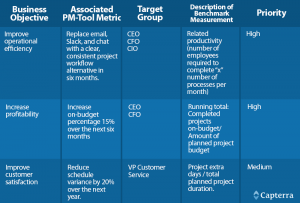
When openings become available in your company, you want to shout: “We are hiring!” far and wide. But before you start yelling from the mountain tops, take a step back and ask yourself: “Where should I start looking for candidates? Should I look internally or externally?”
This is a dilemma for hiring officials. While many companies have “promote from within” policies (where you need to start at the bottom and work your way up), others focus their efforts on the outside candidate pool. Incorporating a mix of internal and external applicants into your talent pipeline is the best practice, as there are pros and cons associated with relying on either source exclusively.
Internal Recruiting
The Pros:
Current employees know your company mission and culture. They are immersed in it as they come to work every day. You can drive higher employee performance if there is a promise of growth and promotion. The best HR managers will take note of their top employees, including their interests and future career aspirations. That way they know which candidates would be a good fit for the position.
Hiring managers can also help employees meet their professional goals through additional training and continued education. For example, Cisco’s TalentConnection is an internal recruitment program that enabled Cisco to revolutionize internal recruiting. In 2009 Cisco found that 36% of their employees did not know about internal openings within the company. This lack of communication could have ultimately led their talent to look for opportunities elsewhere.
Taking simple steps, such as creating a bulletin board that lists internal openings, or sending a weekly email blast directing employees to the career’s page, can educate employees on new opportunities.
The Cons:
A lot of professionals have heard the term “corporate inbreeding”. This essentially means companies are not bringing in much (or any!) outside talent into the company. Companies can get into a bad habit of only looking internally for managerial positions. Some even allow managers to hand pick his or her successor. This almost automatically ensures mistakes of the old manager will undoubtedly become the mistakes of the new manager (since that was what he or she was taught). The new manager won’t be able to frame the situation in any other way, and the cycle will continue to repeat.
Another pitfall of this approach is it can cause employees to have a false sense of entitlement. Employees may start to think promotions are based on seniority and not on performance. If left unchecked, this particular problem can also lead into workplace hostility. If an employee is promoted to a managerial position over others, it may be difficult for the employee to thrive in his or her new role if there is a lot of internal opposition.
External Recruiting
The Pros:
Posting a position externally can increase the applicant pool exponentially – since you are not limiting the talent to employees within the organization. Applicants with all different backgrounds and skills will be looking to utilize their abilities, which can be a breath of fresh air to your organization. Some of the best organizational changes can come by bringing someone new onboard. For example, someone new to the auto industry might bring a new idea because of his or her background in the healthcare industry. This can help your company innovate and become more adaptable to the ever changing business landscape.
Humans are competitive by nature and a healthy level of competition can help bring out some of the best workplace performances. Incorporating new people into the mix will help motivate employees to consistently perform well so they can be considered for the next opening. External recruiting also enables you to reach people who are high performers in their industry – which can make your competition part of your team.
The Cons:
Adjusting to a new environment can be difficult for anyone – especially if you are walking into a new job. You may hire someone and find that he or she is having trouble adjusting to the corporate culture. Additionally, if you hired an external applicant for a position an internal applicant was vying for, it could cause tension within a department. Coworkers could also make it difficult for the new employee to perform well in his or her new role. This may ultimately cause the person to leave.
In an organization, most HR and department managers know who their best workers are. Since you already have a good grasp on how a person performs in his or her current role, you can take an accurate guess how he or she can handle additional responsibilities. External applicants leave a sense of mystery. You can have an applicant that excelled during the interview phase, but is a nightmare employee.
Strictly recruiting internally or externally is not the best method. When you broaden your talent pool to include both internal and external candidates, competition for the position will increase. HR managers will be able to see who has the skills they are looking for. The more competition for an opening, the likelier applicants are to bring their “A” game.
For more information on how to find the best candidates, check out our ebook: The Online Recruiting Guide: 11 Steps to Attract More Applicants.
(301)







